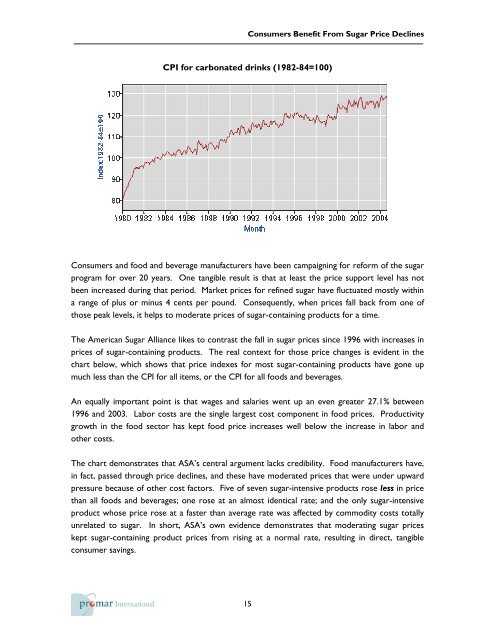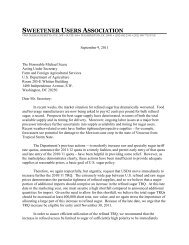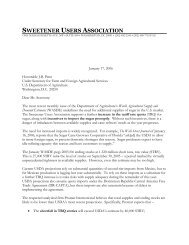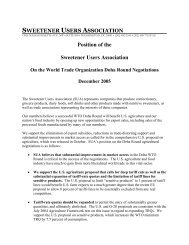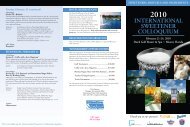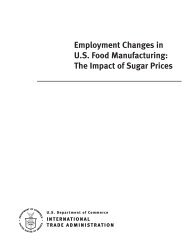Consumers Benefit From Competitive Sugar Prices - Sweetener ...
Consumers Benefit From Competitive Sugar Prices - Sweetener ...
Consumers Benefit From Competitive Sugar Prices - Sweetener ...
Create successful ePaper yourself
Turn your PDF publications into a flip-book with our unique Google optimized e-Paper software.
<strong>Consumers</strong> <strong>Benefit</strong> <strong>From</strong> <strong>Sugar</strong> Price DeclinesCPI for carbonated drinks (1982-84=100)<strong>Consumers</strong> and food and beverage manufacturers have been campaigning for reform of the sugarprogram for over 20 years. One tangible result is that at least the price support level has notbeen increased during that period. Market prices for refined sugar have fluctuated mostly withina range of plus or minus 4 cents per pound. Consequently, when prices fall back from one ofthose peak levels, it helps to moderate prices of sugar-containing products for a time.The American <strong>Sugar</strong> Alliance likes to contrast the fall in sugar prices since 1996 with increases inprices of sugar-containing products. The real context for those price changes is evident in thechart below, which shows that price indexes for most sugar-containing products have gone upmuch less than the CPI for all items, or the CPI for all foods and beverages.An equally important point is that wages and salaries went up an even greater 27.1% between1996 and 2003. Labor costs are the single largest cost component in food prices. Productivitygrowth in the food sector has kept food price increases well below the increase in labor andother costs.The chart demonstrates that ASA’s central argument lacks credibility. Food manufacturers have,in fact, passed through price declines, and these have moderated prices that were under upwardpressure because of other cost factors. Five of seven sugar-intensive products rose less in pricethan all foods and beverages; one rose at an almost identical rate; and the only sugar-intensiveproduct whose price rose at a faster than average rate was affected by commodity costs totallyunrelated to sugar. In short, ASA’s own evidence demonstrates that moderating sugar priceskept sugar-containing product prices from rising at a normal rate, resulting in direct, tangibleconsumer savings.15


